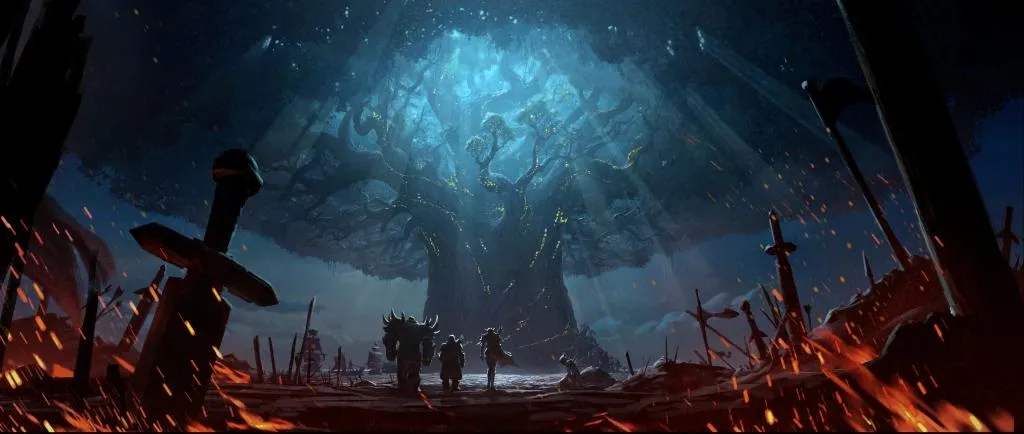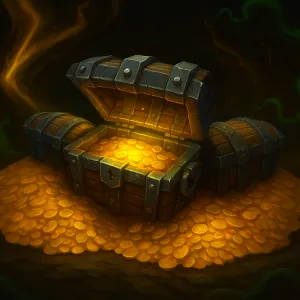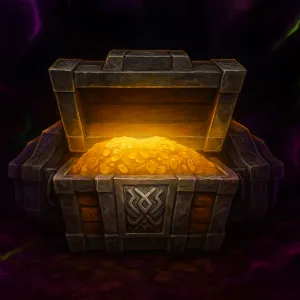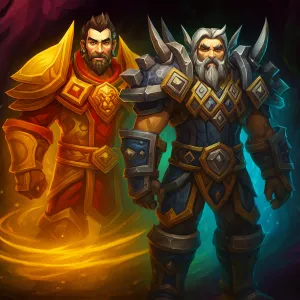WoW Classic First Aid Guide
I’ve always been on the hunt for ways to optimize healing in World of Warcraft Classic and First Aid is key to keeping characters alive, reducing downtime and preserving resources in solo and group scenarios. This profession lets you craft bandages and Anti-Venom with relative ease and it’s a quick fix for injuries and poisons. In this guide I’ll share my personal experience with everything WoW Classic First Aid — including trainer locations, skill ranks, item crafting and practical uses in game.
First Aid Basics
First Aid is one of the three Secondary Professions in WoW Classic along with Cooking and Fishing. Since it doesn’t take up a primary profession slot, it’s available to any class or race at any level, though some advanced steps require specific skill levels and character levels. The main focus of First Aid is to create bandages that heal quickly and bypass the need for expensive consumables. Many players use First Aid in dungeons, raids and PvP because it provides a steady supply of instant-use healing resources.
Some important First Aid basics revolve around managing cloth drops and making sure you have the right skill levels to craft different ranks of bandages. Each bandage type requires a specific cloth tier, such as Linen or Runecloth. Higher level bandages have more healing output and are especially useful for endgame content. Practicing First Aid from the early levels can feel rewarding as it directly supports solo questing, especially when health potions are scarce.
This profession is pretty straightforward, but it still has some unexpected benefits if you put in the time to level it. Hunter and Warlock players, for example, can heal their pets with bandages, which is a nice security layer in fights. The next paragraphs will go through the steps to start with First Aid and a deeper look at the different bandage types and skill ranks.
First Aid Cloth Tiers
| Cloth Tier | Bandage Example | Skill Range to Craft | Typical Mobs That Drop It |
|---|---|---|---|
| Linen Cloth | Linen Bandage | 1–50 | Low-level humanoids (1–15) |
| Wool Cloth | Heavy Wool Bandage | 80–125 | Humanoids in mid-level zones |
| Silk Cloth | Heavy Silk Bandage | 150–210 | Humanoids around 30–40 |
| Mageweave Cloth | Heavy Mageweave Bandage | 225–260 | Humanoids around 40–50 |
| Runecloth | Heavy Runecloth Bandage | 260–300 | Higher-level humanoids (50+) |
Farming basic cloth is good because a steady supply of bandages means fewer deaths and reduced downtime. Keep an eye on the Auction House when certain cloth tiers are less common in personal loot drops. First Aid Basics is the foundation for more advanced steps and mastering these will give you a solid foundation to level all the way up to 300.
Crafting Bandages and Anti-Venom

Crafting bandages is the main function of First Aid and it involves converting different cloths into healing items. Anti-Venom is another bonus, which is a quick fix for poison effects that appear in leveling zones, dungeons, and PvP. Both bandages and anti-venom items are essential for handling many common threats in WoW Classic.
Be mindful of cloth drops. Humanoid mobs are the main source of Linen, Wool, Silk, Mageweave and Runecloth. In higher level zones, Runecloth drops more often, so once you hit the required skill rank you can craft higher level bandages. Anti-Venom items require Venom Sacs which drop from specific beasts, insects and other monsters that use poison-based attacks. The recipes for Strong Anti-Venom and Powerful Anti-Venom require a bit more effort to find or buy.
Remember, when you use a bandage it will put a Recently Bandaged debuff on the target, preventing further bandage use for 60 seconds. Movement or taking damage while applying a bandage will interrupt the channel and end the healing early. The channeler needs to stay still, but the target can move as long as they are within 15 yards. Crafting bandages and anti-venom items is easy once you know the materials and recipe sources which are covered below.
Common Bandage and Anti-Venom Recipes
- Linen Bandage
- Requires Linen Cloth ×1
Ideal for starting levels (1–40 skill)
- Heavy Linen Bandage
- Requires Linen Cloth ×2
Use this until around 80 skill
- Wool Bandage and Heavy Wool Bandage
- Requires Wool Cloth ×1 or ×2, respectively
Pushed until roughly 115 for normal, 125 for heavy versions
- Silk Bandage and Heavy Silk Bandage
- Requires Silk Cloth ×1 or ×2, respectively
Useful until roughly 180 for normal, 210 for heavy versions
- Mageweave Bandage and Heavy Mageweave Bandage
- Requires Mageweave Cloth ×1 or ×2, respectively
Important steps: 225–260 skill
- Runecloth Bandage and Heavy Runecloth Bandage
- Requires Runecloth ×1 or ×2, respectively
Final stages: 260–300 skill
- Anti-Venom, Strong Anti-Venom, and Powerful Anti-Venom
- Require different Venom Sacs (regular, strong, or powerful)
Effective for poison removal in leveling, dungeons, raids, and PvP
Each of these recipes follows the simple progression in First Aid. Crafting Bandages and Anti-Venom is designed to go hand in hand with your character’s leveling. Cloth availability and trainer or drop-based recipes will guide you through each tier.
Training and Skill Ranks
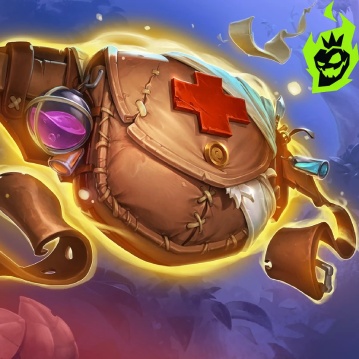
First Aid skill ranks are divided into four main categories: Apprentice, Journeyman, Expert, Artisan. Each rank unlocks a higher skill cap and more recipes, eventually the best bandages in the game. Proper training will prevent you from stalling out when your character level and skill level are not in sync.
The trainers and items can be found in different locations. Journeyman training will usually be with the standard city trainers, but some class-specific areas may not have them, so you will need to visit a major city. Expert and Artisan ranks require more specific actions like buying training manuals or completing a quest. Remember that Anti-Venom also follows skill boundaries. The basic one is available at 80 skill, the strong one is world drop or Auction House, and the powerful one is in later phases and requires Argent Dawn reputation.
First Aid Ranks
| Rank | Skill Range | Method of Learning | Trainers/Locations |
|---|---|---|---|
| Apprentice | 1–75 | Talk to any First Aid trainer | Major cities and some towns in early zones |
| Journeyman | 75–150 | Speak to a First Aid trainer again | Same as Apprentice trainers |
| Expert | 150–225 | Purchase Expert First Aid – Under Wraps manual | Alliance: Deneb Walker (Stromgarde Keep), Horde: Balai Lok’Wein (Brackenwall Village) |
| Artisan | 225–300 | Complete the Triage Quest | Alliance: Doctor Gustaf VanHowzen (Theramore), Horde: Doctor Gregory Victor (Hammerfall) |
Learning all ranks will unlock the ability to craft advanced bandages like Heavy Runecloth Bandage. This progression from Apprentice to Artisan will give you a steady increase in healing power. In the next section I will go into more detail about the quest that grants Artisan status and how it works in Training and Skill Ranks.
The Triage Quest Explained
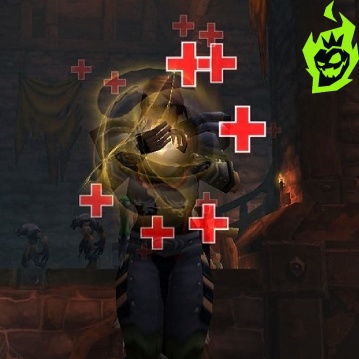
The Triage Quest is required for Artisan First Aid (skill range: 225–300). At level 35 and 225 First Aid skill you can talk to Doctor Gustaf VanHowzen in Theramore for Alliance or Doctor Gregory Victor in Hammerfall for Horde. When you start the quest you will get a special Triage Bandage that must be used on wounded NPCs before too many of them die. The biggest challenge of the Triage Quest is time management. 15 patients need to be saved, but no more than 6 can die. There are multiple ranks of injured NPCs that spawn randomly, so focusing on the most critical ones first is key. If the quest fails, you can abandon and retry indefinitely, so it’s more forgiving than it seems at first.
Completing this quest grants Artisan status and unlocks the recipes for the best bandages in WoW Classic. These advanced bandages are super useful in higher-level raids like Molten Core and Blackwing Lair, or while leveling past 50 in zones with lots of hard-hitting mobs. Here’s a quick rundown of the quest:
Triage Quest Steps
- Obtain the Triage Quest – Visit Doctor Gustaf VanHowzen (Theramore) or Doctor Gregory Victor (Hammerfall) with at least 225 First Aid skill.
- Equip the Triage Bandage – Place it on an easily accessible action bar slot.
- Begin Healing Injured NPCs – Watch for the color-coded health bars (heavily injured appear near death).
- Prioritize the Most Critical Cases – Green (least urgent), Yellow (medium), Red (most urgent).
- Prevent Six Casualties – If too many expire, the quest fails.
- Succeed and Receive Artisan Training – Unlock skill level 300 potential and advanced recipes.
Getting Artisan through the Triage Quest is a big milestone for anyone leveling First Aid. It gives you access to Runecloth Bandage and Heavy Runecloth Bandage, which restore a lot of health, making them essential in higher-level content. This will give you strong healing output whether you’re raiding, exploring elite zones or engaging in PvP.
Tips for PvP, Raids, and Twinks
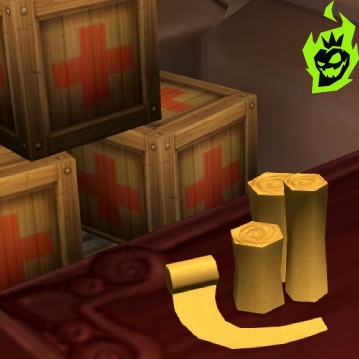
First Aid stands out in PvP because it allows you to heal while in combat. Bandages don’t share a cooldown with Health Potions, so you have multiple ways to recover during intense fights. Applying a bandage takes a few seconds, but any damage interrupts the channel, so stepping out of harm’s way is key. This often turns the tide in battlegrounds like Warsong Gulch when trying to survive or protect a flag carrier.
In raids, even healing classes like Healers find First Aid appealing because it allows mana conservation during trash pulls or non-critical moments. They like the synergy of having others bandage themselves instead of constantly draining their mana pools with healing spells. Physical DPS classes often carry stacks of bandages to maintain steady damage output without waiting for healers after each fight.
Twinkers building low-level Twinks for the 19 or 29 battleground brackets value Heavy Runecloth Bandages because they heal for a lot of characters below level 35. Since many Twinks in those brackets are under 2,000 total health, being healed for around 2,000 with a single item is a big deal. Here are some key tips to maximize First Aid in these environments.
| Scenario | Recommendation | Reasoning |
|---|---|---|
| PvP | Use bandages when not under direct attack or out of LoS | Ensures the channel isn’t interrupted by incoming damage |
| Raids | Carry stacks of Heavy Runecloth Bandage | Reduces downtime and mana consumption for dedicated healers |
| Twink Brackets | Learn Heavy Runecloth Bandage at skill 225 | Offers powerful heals in lower-level battleground brackets |
| Anti-Venom | Keep some Strong or Powerful Anti-Venom | Great for dealing with rogue poisons or venomous creatures |
Follow these tips for PvP, Raids, and Twinks for better survivability and to maintain momentum throughout the game. In battlegrounds, a well-timed bandage can be the difference between living long enough to cap an objective or dying too soon. In raids, using bandages strategically helps with group efficiency and eases the burden on dedicated healers.
Why First Aid is Important

First Aid is one of the most versatile and cheapest secondary professions in WoW Classic. It helps with leveling by removing downtime and is game changing in dungeons, raids and PvP. Learning the recipes for each bandage tier and where to find the cloth to craft them will provide you with a steady supply of healing items throughout the game.
Completing the Triage Quest at 35 (with 225 First Aid) is a big milestone, it unlocks the ability to craft Heavy Runecloth Bandages. These bandages heal a lot and are a must-have once you hit high-level content. Anti-Venom recipes also help with removing poison effects that would otherwise hinder your progress. I hope this guide has shown you the power of First Aid and will inspire others to get into it. It has been a lifesaver for me and my teammates in intense fights, for healers to conserve mana, and for survival in battlegrounds. Whether you’re questing solo, grouping for raids, or gearing a Twink, First Aid is a must-have in World of Warcraft Classic.
